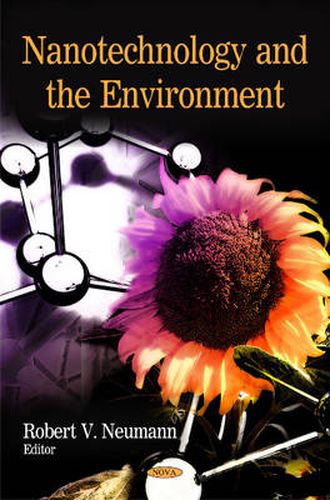Readings Newsletter
Become a Readings Member to make your shopping experience even easier.
Sign in or sign up for free!
You’re not far away from qualifying for FREE standard shipping within Australia
You’ve qualified for FREE standard shipping within Australia
The cart is loading…






Nanotechnology has potential applications in many sectors of the American economy, including consumer products, health care, transportation, energy and agriculture. Since 2001, EPA has played a leading role in funding research and setting research directions to develop environmental applications for, and understand the potential human health and environmental implications of, nanotechnology. That research has already borne fruit, particularly in the use of nanomaterials for environmental clean-up and in beginning to understand the disposition of nanomaterials in biological systems. Some environmental applications using nanotechnology have progressed beyond the research stage. The purpose of this book is elucidate the needs associated with nanotechnology, to support related EPA programs, and to communicate these nanotechnology science issues to stakeholders and the public. The book begins with an introduction that describes what nanotechnology is, why EPA is interested in it, and what opportunities and challenges exist regarding nanotechnology and the environment. It then moves to a discussion of the potential environmental benefits of nanotechnology, describing environmental technologies as well as other applications that can foster sustainable use of resources. The book next provides an overview of existing information on nanomaterials regarding components needed to conduct a risk assessment.
$9.00 standard shipping within Australia
FREE standard shipping within Australia for orders over $100.00
Express & International shipping calculated at checkout
Nanotechnology has potential applications in many sectors of the American economy, including consumer products, health care, transportation, energy and agriculture. Since 2001, EPA has played a leading role in funding research and setting research directions to develop environmental applications for, and understand the potential human health and environmental implications of, nanotechnology. That research has already borne fruit, particularly in the use of nanomaterials for environmental clean-up and in beginning to understand the disposition of nanomaterials in biological systems. Some environmental applications using nanotechnology have progressed beyond the research stage. The purpose of this book is elucidate the needs associated with nanotechnology, to support related EPA programs, and to communicate these nanotechnology science issues to stakeholders and the public. The book begins with an introduction that describes what nanotechnology is, why EPA is interested in it, and what opportunities and challenges exist regarding nanotechnology and the environment. It then moves to a discussion of the potential environmental benefits of nanotechnology, describing environmental technologies as well as other applications that can foster sustainable use of resources. The book next provides an overview of existing information on nanomaterials regarding components needed to conduct a risk assessment.